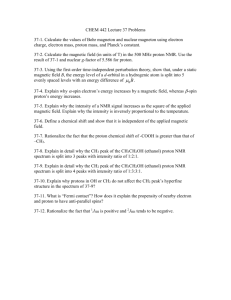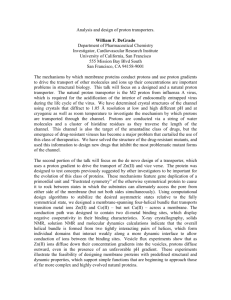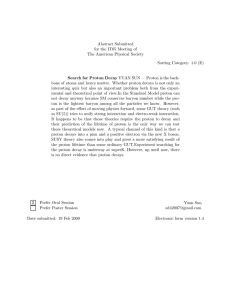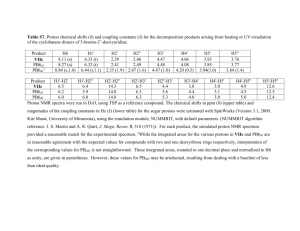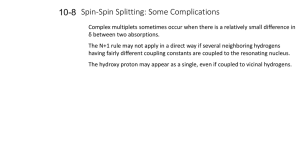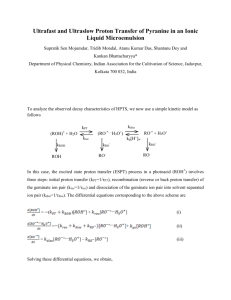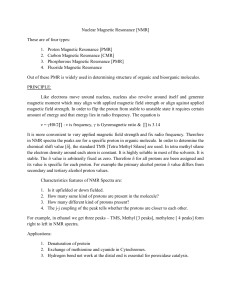Solid State NMR Studies of Defect Structures and Mobility in Doped
advertisement
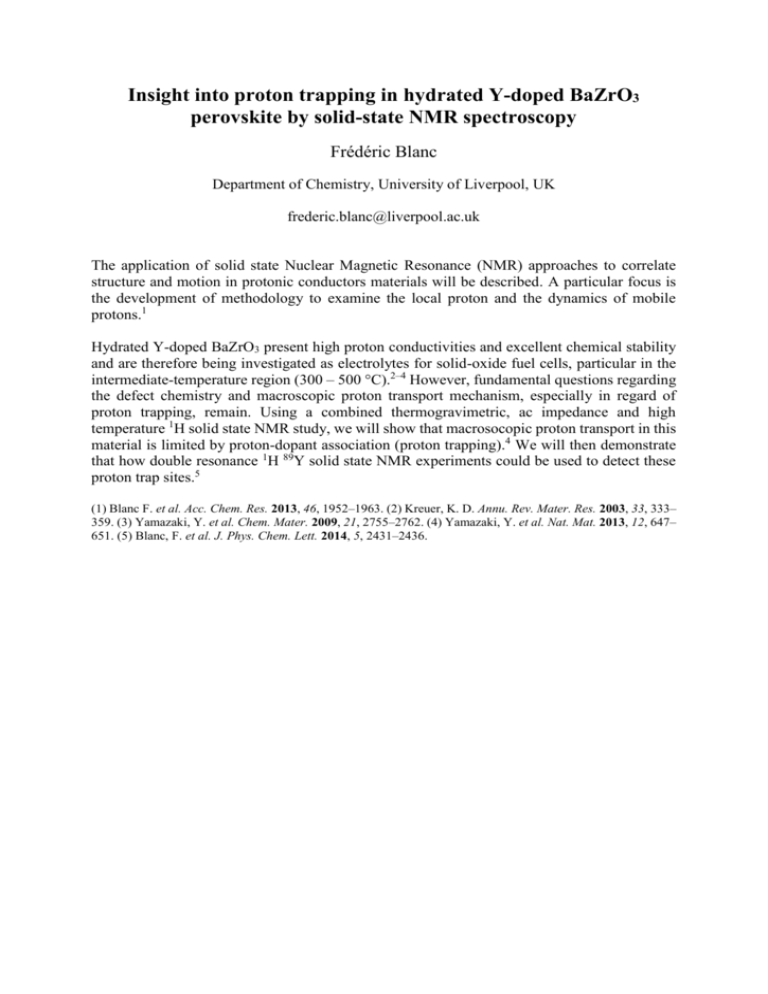
Insight into proton trapping in hydrated Y-doped BaZrO3 perovskite by solid-state NMR spectroscopy Frédéric Blanc Department of Chemistry, University of Liverpool, UK frederic.blanc@liverpool.ac.uk The application of solid state Nuclear Magnetic Resonance (NMR) approaches to correlate structure and motion in protonic conductors materials will be described. A particular focus is the development of methodology to examine the local proton and the dynamics of mobile protons.1 Hydrated Y-doped BaZrO3 present high proton conductivities and excellent chemical stability and are therefore being investigated as electrolytes for solid-oxide fuel cells, particular in the intermediate-temperature region (300 – 500 °C).2–4 However, fundamental questions regarding the defect chemistry and macroscopic proton transport mechanism, especially in regard of proton trapping, remain. Using a combined thermogravimetric, ac impedance and high temperature 1H solid state NMR study, we will show that macrosocopic proton transport in this material is limited by proton-dopant association (proton trapping).4 We will then demonstrate that how double resonance 1H 89Y solid state NMR experiments could be used to detect these proton trap sites.5 (1) Blanc F. et al. Acc. Chem. Res. 2013, 46, 1952–1963. (2) Kreuer, K. D. Annu. Rev. Mater. Res. 2003, 33, 333– 359. (3) Yamazaki, Y. et al. Chem. Mater. 2009, 21, 2755–2762. (4) Yamazaki, Y. et al. Nat. Mat. 2013, 12, 647– 651. (5) Blanc, F. et al. J. Phys. Chem. Lett. 2014, 5, 2431–2436.
